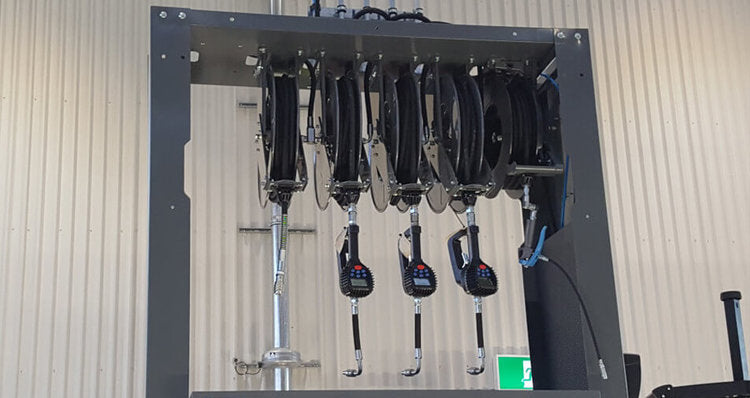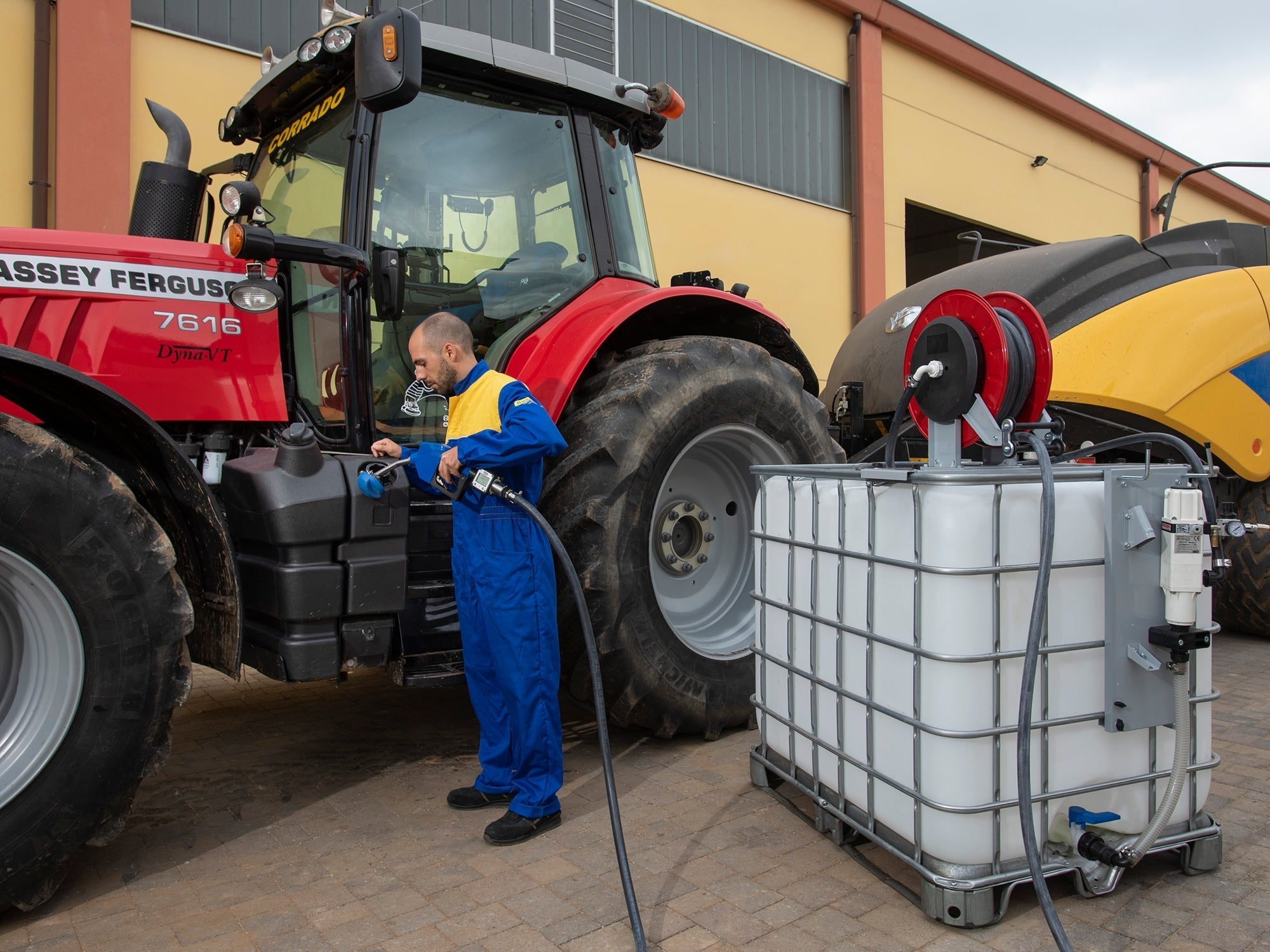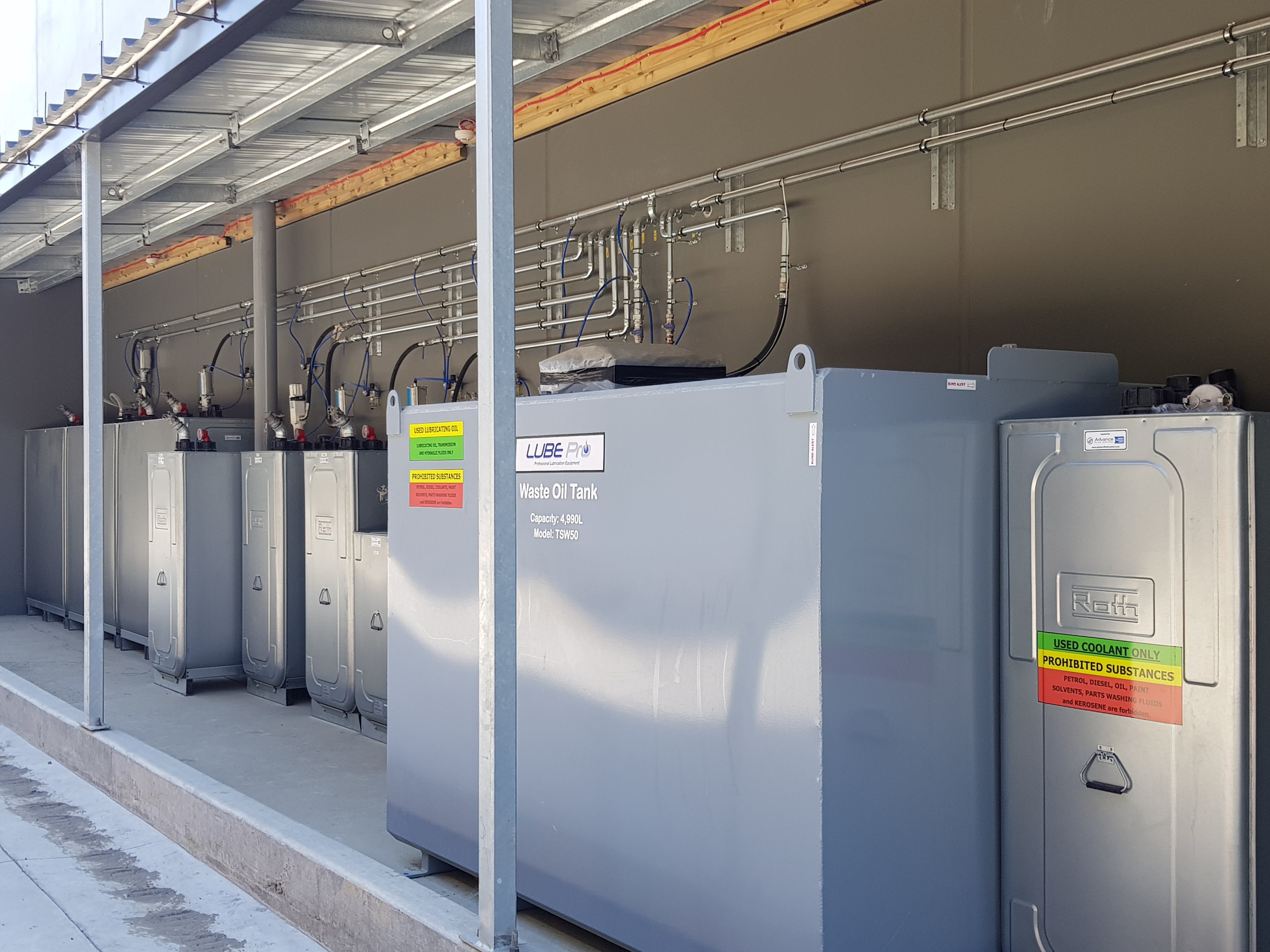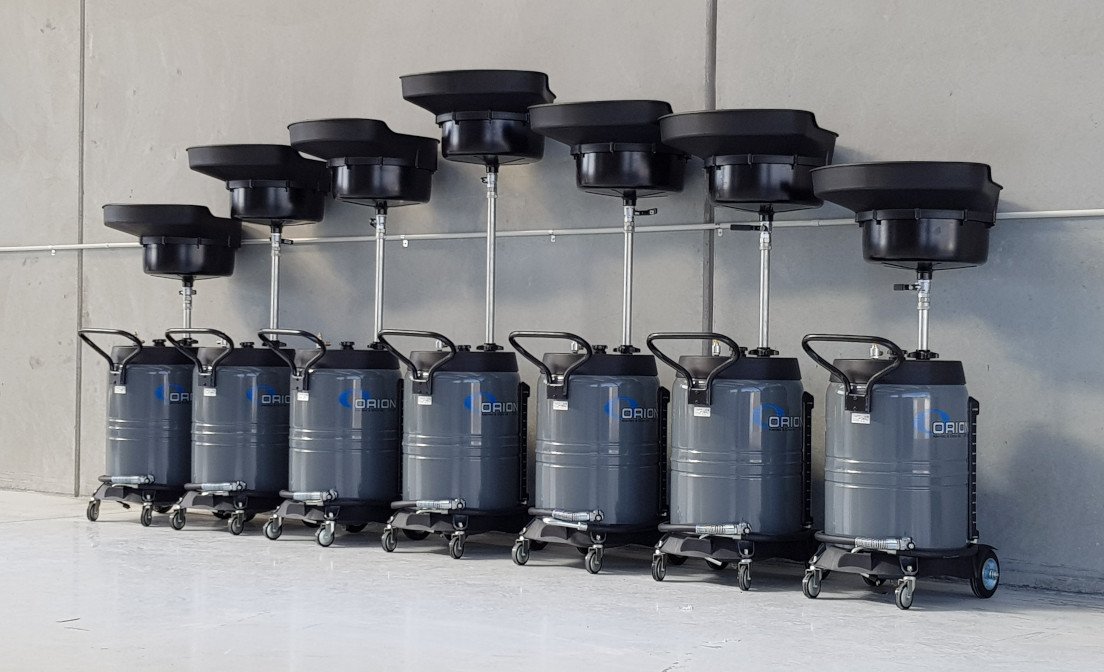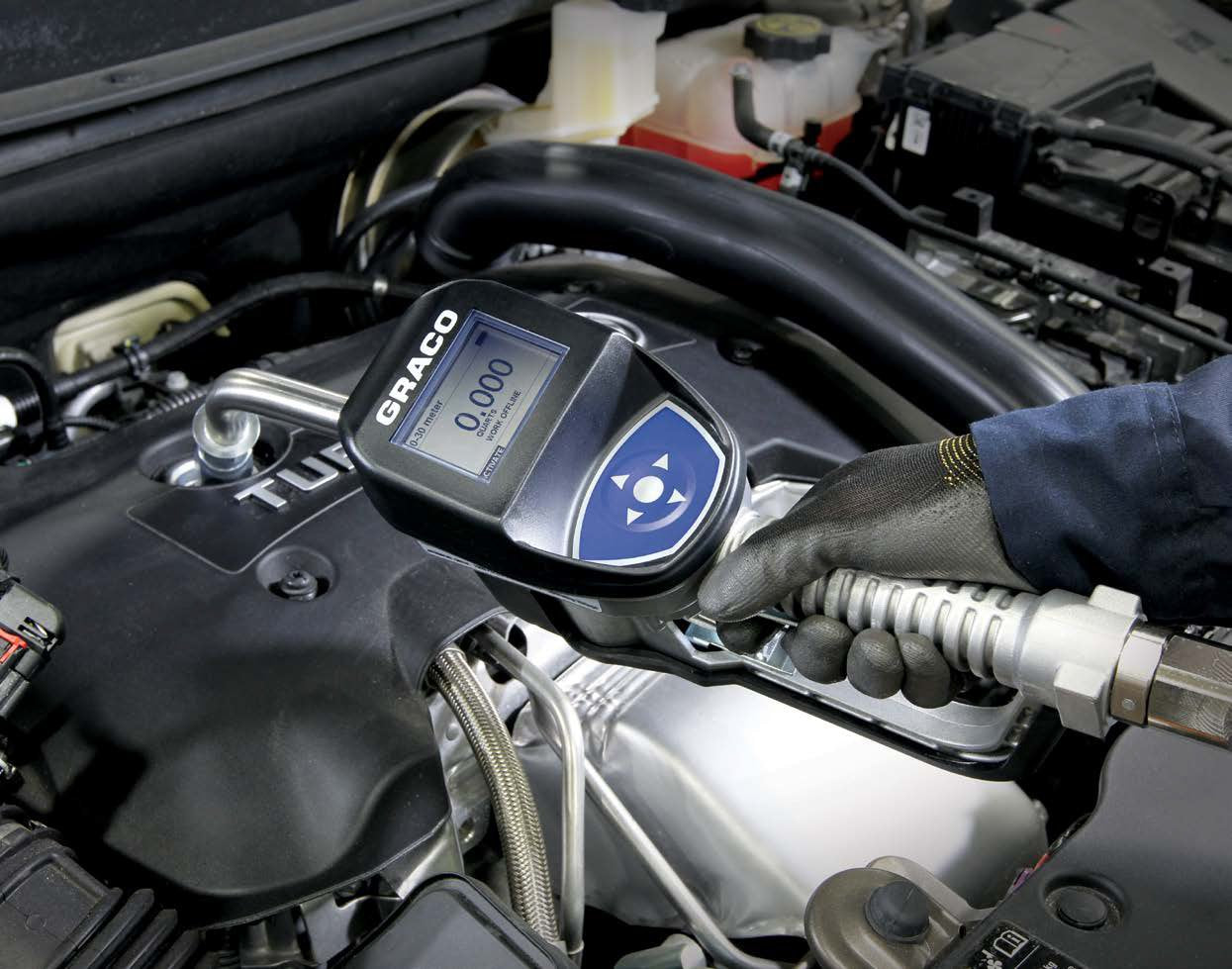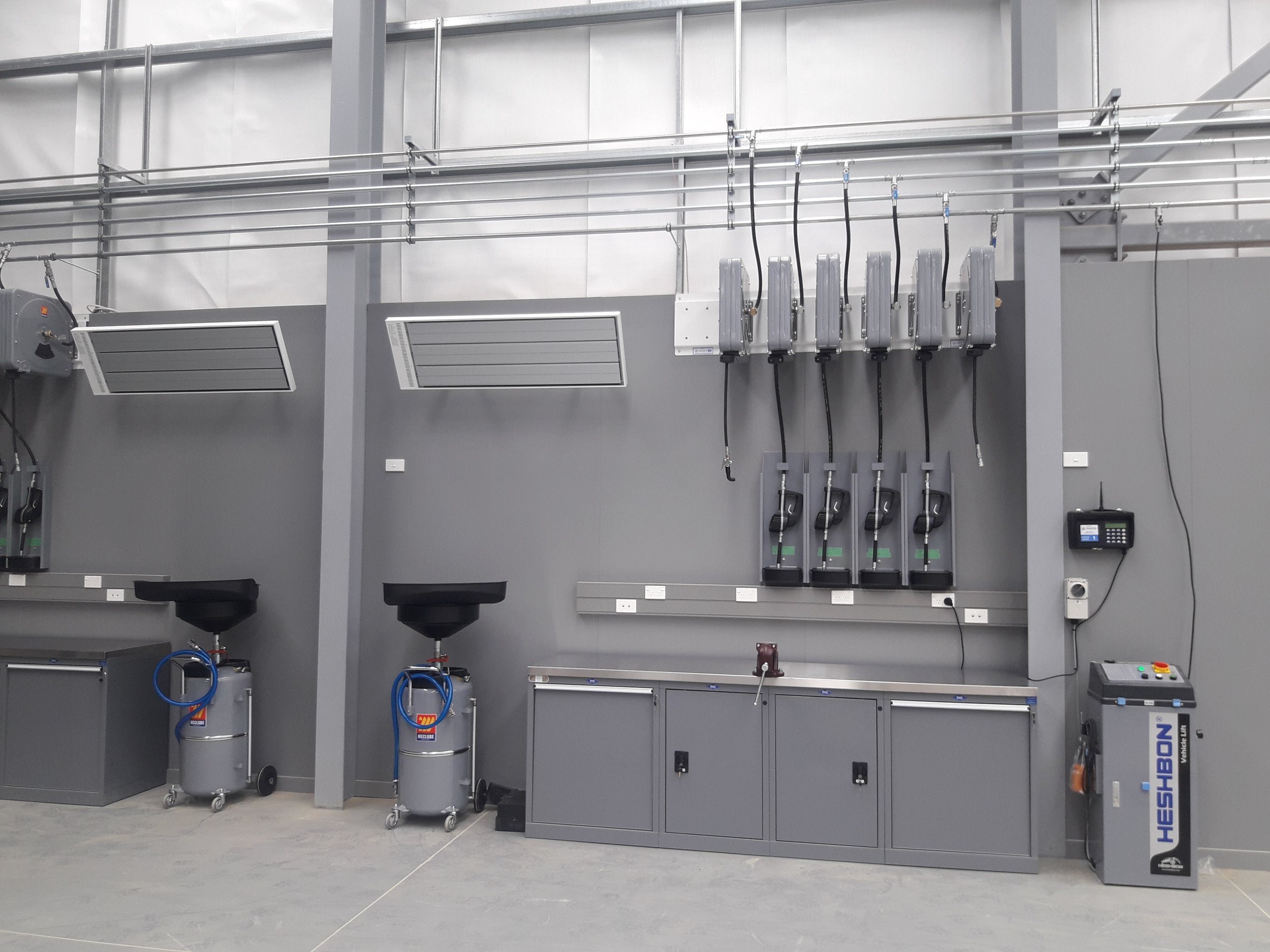3 Tips for improving cold weather pumping performance
When winter time arrives on our shores, many areas of our infrastructure come under pressure, and in the case of a mechanical service workshop few systems are impacted more than the lube system.The viscosity of many heavy lubricants such as gear oil and grease skyrockets once the fluid temperature drops below 10°C, and some greases almost become solids, while heavy oils look more like treacle.
It is little wonder then that the dispensing performance takes a big hit – and job throughput of the workshop can be affected as a result.
Grease Pump in a drum with a drum heater attached and oil tanks & pumps in background
Here are 3 tips to help minimise the impact of the weather on your lube system_
1. Heat the drum or ibc
This obviously boosts performance by reducing the viscosity of the fluid, and is used very successfully by many workshops in this country. Drums are heated using a thermostat controlled silicone rubber heating band, while IBC’s can be heated using a wrap-around blanket type heater which we have available on indent. Email us for information on these.
The effectiveness of this solution does reduce with long pipe runs, as the warm fluid in the pipe cools when pumping stops. However even if the entire pipe run contains cold fluid when pumping starts, as soon as the pipe starts to fill with warm fluid this quickly starts reducing the overall resistance in the system allowing pumping to speed up, and therefore still facilitating better performance than if cold fluid is being pumped into the start of the system.
An important safety point to note with drum heaters though – ensure that any drum heater you use is made by a reputable manufacturer with strict quality control, as there is not a lot of insulation separating the 230V heater element from the steel drum and a small defect could increase the prospect of some voltage leaking onto the the exposed drum surface, which is not a risk anybody wants to take.
2. Upgrade the pump
This is a particularly applicable option if the flow rate is not great even in warmer weather. Generally you should be looking for a pump with both a higher flow rate, and a higher ratio – as long as the piping and the components in your system can handle the higher pressure associated with increasing the ratio of the pump (click here for an explanation of pump ratios).
If the piping is undersized for the run length and the fluid grade being pumped, then a pump upgrade may not have much effect on the flow rate. In this case contact us to discuss the issue and we will advise what steps you can take to improve the dispensing rate.
3. Decentralise the lube storage
This is usually more applicable in large workshops where distribution lines from the lube store can be very long.
Sometimes the best and most cost effective option is to get another drum or two of grease, and/or gear oil or whichever grades are under-performing, get suitable pumps to match, situate them near the dispensing areas furthest away from the lube store, isolate that portion of the line from the main system, and connect the new pump into it.
The reduced resistance from the pump to the dispensing point should translate into faster dispensing – provided the pump has been specified properly. Adding a drum heater will obviously ensure further improvement still.
For high usage oil grades which are affected, it may be worth looking at situating some secondary tanks at the far end of the workshop and running the dispense points in that area from these tanks.
An additional option is to utilise mobile oil dispensers, and mobile grease kits on selected products which allows the drum and dispensing setup to be moved around the workshop as needed. This is particularly applicable for lower usage fluid types.
Solutions & advice
We have a team of lube system specialists who advise and help clients all over the country to resolve lube system issues like these every day.
Get in touch with us to get free advice specific to your application.
 is here! Shop now, pay later in 4 easy installments
is here! Shop now, pay later in 4 easy installments
